Moments ago, I posted a press release from the UK-based software-defined radio manufacturer, SDRplay, announcing their latest product: the RSPduo: a 14-bit Dual Tuner SDR.
I should start with the disclaimer that, not only was I sent an RSPduo to review and evaluate, but SDRplay has been a supporter of the SWLing Post for a few years now. You’ve no doubt seen their ads in the upper right corner of our site. After I reviewed their first SDR (the RSP1) I discovered that SDRplay––all of their staff and supporters––welcome constructive criticism and even invite frank discussions. They’re a company with integrity. No doubt, this is why I agreed to alpha- and beta-test their SDRs. Fortunately, I’ve not been disappointed.
As a company, moreover, SDRplay breaks the mold––and in very good ways:
- SDRplay is a small company that employs actual radio enthusiasts. Their designs and software cater to DXers, SWLs, hams, scanner enthusiasts, amateur astronomers, experimenters, and makers, among others.
- SDRplay designs and builds their products in the United Kingdom. No doubt they could increase their profit margin by using manufacturing centers in China, but they choose not to do so, to the benefit of their products.
- The quality of the company’s products is, at least to date, excellent.
- SDRplay’s product pricing is nonetheless quite affordable
That last item, in particular, is a head-scratcher. Considering these facts, how does SDRplay still manage to keep their pricing so competitive? I only wish I knew. When the company released the RSP1A last year, I had already spent a few months with alpha and beta units, mulling over their respective merits (and there were many). So I was simply gobsmacked when they announced that the price would be just $99 US. I rather figured the company was leaving money on the table, although I was pleased to announce this price to my readers here.
Fast-forward to two weeks ago: I received the new RSPduo to review. And the price this time? $279 US. While this is currently the priciest product in the SDRplay line, let’s go over what makes this SDR special…and why I still think SDRplay may be leaving money on the table.
Introducing the SDRplay RSPduo
The RSPduo is unlike any other SDR in the SDRplay product line, and, indeed, unlike most of the budget SDRs currently on the market.
As “duo” implies, this RSP features dual independent tuners, both piped through a single high-speed USB 2.0 interface. With the RSPduo, you can explore two completely separate 2 MHz bands of spectrum anywhere between 1kHz and 2GHz.
SDRplay lays out several use-scenarios in their press release:
- The ability to simultaneously receive on two totally independent 2 MHz spectrum windows anywhere between 1 kHz and 2 GHz
- Simultaneous processing from 2 antennas enables direction-finding, diversity, and noise-reduction applications
- Ideal for cross band full-duplex reception, e.g. HF + VHF, or VHF + UHF
- Simultaneous Dump1090 and VHF ATC reception
- Simultaneous monitoring and recording of 2 ISM bands
- Use SDRuno to seamlessly control and manage the dual tuner in a single environment.
Externally, the RSPduo bears a strong resemblance to the RSP2pro. Internally, however, it’s quite different.
Besides featuring a second independently controlled tuner, the RSPduo also sports 14 bit ADCs and a completely re-designed RF front end, which enhances receiver selectivity and improves dynamic range.
In short, the RSPduo is like having two SDRs in one.
Performance
I received the RSPduo during a very busy time of the year: the build up to the Hamvention in Xenia, OH.
One of the first things I noticed about the RSPduo is its weight. When I picked up the package from SDRplay, I could tell it weighed at least twice that of the RSP1A. One reason for the extra heft is that the RSPduo, like the RSP2 Pro, has a metal enclosure. I’m willing to bet the RSPduo also has more shielding––adding even a little extra weight.
I’ve had the RSPduo on the air for more than a week now, and have checked out all of its major functions and begun to learn the nuances of navigating the dual receivers in the latest version of SDRuno.
SDRplay will, I feel sure, post a primer video on using the various dual tuner functions in the coming weeks.
Installation of the software, even in pre-production, was totally a “plug-and-play” experience. Simply install the SDRuno software package with the RSPduo disconnected from the USB port. Plug in the RSPduo, and wait for the USB driver to load, then open SDRuno. That’s it. You’re on the air!
As I’ve indicated, the RSPduo is really like having two RSP1As in a single RSP2 Pro package. One of these dual receivers––the master––can utilize either a standard 50 ohm SMA antenna port, or a Hi-Z port. The second receiver uses one 50 ohm SMA antenna port just like the RSP1A.
I much prefer using the Hi-Z port for everything longwave and mediumwave. I did hook up both antenna ports on the master receiver, however, and switched back and forth between the two. At least in my antenna setup, I feel like the Hi-Z option lends itself to improved sensitivity on these bands. It’s not a dramatic difference––indeed, looking at the spectrum display one barely notices the difference––but my ears told me the noise floor was lower and signal strength slightly better with the Hi-Z port. Above 2 MHz, the Hi-Z port is not prefered since it lacks the same level of RF pre-selection as the 50 ohm ports provide.
Unlike the Hi-Z port with the RSP2, the RSPduo treats the Hi-Z port more like an auxiliary antenna port. When I employed the Hi-Z port in the HF bands, I did notice small spurious noises, but this might have been due to my antenna port configuration here in the shack (my Hi-Z connector is simply attached to the shield and center conductor of my coax).
Again, however, for anything above 2 MHz, SDRplay suggests using the 50 ohm ports.
How to set up dual receivers on one screen/monitor
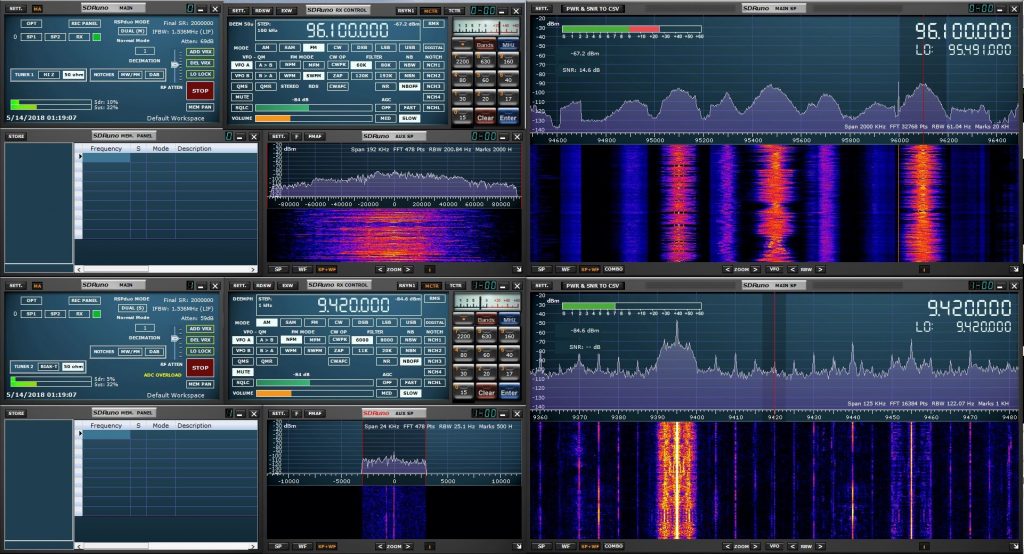
Listening to the FM broadcast band on the main receiver and Voice of Greece shortwave on the second receiver.
One of the first things I was eager to do was to run the dual receiver functionality on one monitor. Although SDRplay makes this a pretty simple process in the latest version of SDRuno, I still stumbled a bit as I learned to navigate the controls.
Here’s a quick primer to get both receivers on the air on one monitor/screen:
- First, open SDRuno in “single receiver mode” (the typical SDRuno default).
- Next, click on the “RSPduo mode” button and select one of the modes. In this case, I’m not running the ADS-B application, so I’ll choose “DUAL (NORMAL)”.
- Now, to format the “Master” receiver windows so they only use the top half of the monitor, click on the OPT button.
- Select “Auto Layouts” and “RSPduo Master.”
If you’ve followed these steps with me, your screen should look something like this:
Now you’ll want to start the second receiver. Do this by opening the SDRuno application again (as if you were opening SDRuno for the first time). Make sure you’ve selected your RSPduo if you have more than one RSP connected.
The new instance of SDRuno will fill the entire screen by default, so you’ll need to format it to occupy the lower half of the screen.
Simply click on the OPT button again, select “Auto Layouts,” and “RSPduo Slave.”
Your full screen should now look something like this:
Now you can start using both receivers, but you’ll have to always start the “Master” receiver first. In fact, the “Master” receiver must always be active in order to operate the “Slave” receiver. You can always close the “Slave” receiver without affecting the “Master” receiver; however, if you close the “Master” receiver, you will effectively close both receivers.
Again, I fully expect SDRplay will soon produce a demonstration video showing how you can navigate SDRuno’s new dual-receiver functionality.
Comparisons
As I’ve mentioned in most previous SDR reviews, I do like to take a considerable amount of time to set up SDR comparisons.
Herein lies the difficulty of reviewing an SDR’s performance. Because the user has so much power to control variables and thus shape the receiver’s function, it’s actually quite hard to make an “apples-to-apples” comparison––insuring that all important filters, gain controls, DSP, etc., are as close to identical as possible.
One tool that helps me do this is SDR Console, since it can control a number of SDRs and receiver parameters can be set up identically. Unfortunately, the RSPduo is so new, SDR Console doesn’t yet support it.
I did use SDRuno to compare the RSPduo with the RSP1A. Fortunately, I could actually run two separate instances of SDRuno simultaneously (and on different monitors, in my case). Both were hooked up to the same antenna via my ELAD ASA15 antenna splitter amplifier.
The RSPduo’s improved dynamic range gives it an advantage in terms of noise floor, sensitivity, and selectivity.
The improved performance is not dramatic––but I understand it might be especially detectable to those who want a receiver with a more robust front end.
In fact, the RSPduo’s 50 ohm coaxial ports have quite an array of automatically configured front end filters:
Low Pass
- 2 MHz Band Pass
- 2-12 MHz
- 12-30 MHz
- 30-60 MHz
- 60-120 MHz
- 120-250 MHz
- 250-300 MHz
- 300-380 MHz
- 380-420 MHz
- 420-1000 MHz
High Pass
- 1000 MHz
And an array of notch filters
FM Notch Filter:
- >30dB 77 – 115MHz
- >50dB 85 – 107MHz
- >3dB 144 – 148MHz
MW Notch Filter:
- >15dB 400 – 1650kHz
- >30dB 500 – 1530kHz
- >40dB 540 – 1490kHz
DAB Notch Filter:
- >20dB 155 – 235MHz
- >30dB 160 – 230MHz
The thing is, I live in an RF quiet area, so I can’t fully take advantage of the SDRuno’s more robust front end.
In head-to-head comparisons with the RSP1A, the RSPduo’s performance edge is discernible. Again, I suspect it would be a bit more obvious if I lived in an urban setting with blowtorch stations in the neighborhood. Using the Hi-Z antenna port in the mediumwave portions of the band, the RSPduo has a performance edge over the RSP1A, as well.
Should you grab the RSPduo?
Anytime a new product hits the market, I ask myself if this is the sort of product that would tempt me to reach for my hard-earned cash.
The short answer? Absolutely! Take my money, please! There is no other sub-$300 SDR on the market currently that has the dual tuner functionality of the RSPduo. Thing is, I’ve only had the RSPdup a couple of weeks–there’s so much yet I want to explore here–especially diversity reception!
But what if you already have an SDRplay SDR? Afterall, the RSP1A was only released a few months ago, and the RSP2 series only a year before that.
Here’s my opinion: If you’re an RSP1A or RSP2 owner who is pleased with this SDR’s performance, I wouldn’t necessarily urge you to purchase the RSPduo simply for the modestly enhanced performance characteristics. SDRplay hasn’t retired the RSP2 and RSP1A designs because each model still holds its own, has a purpose, and obviously enjoys a healthy market.
The RSP1A is the affordable yet high performance entry model in the SDRplay product line. It’s really the best value in the radio world, in my humble opinion, at just $99 US. Som enjoy.
The RSP2 and RSP2pro provide excellent performance, three software-selectable antenna inputs, and clocking features, all of which lend it to amateur radio, industrial, scientific, and educational applications; it is a sweet SDR for $169 or $199 (Pro version). I know of no other SDRs with this set of features at this price point. If I liked the characteristics of the RSPduo, but didn’t really need a dual receiver for my application, I’d probably reach for the RSP2 Pro.
But if you have the original RSP, and like SDRuno and the SDRplay community, then I would certainly consider this an opportunity to upgrade. For $279, you’re getting a dual receiver SDR with excellent performance characteristics that will easily surpass the original RSP––considering that you’re essentially getting two very good SDRs in one.
And if you’re all over the spectrum (aren’t we all a bit––quite literally?) in terms of usage, the RSPduo is a fascinating machine for running, say, an ADS-B receiver while independently using the same SDR box to monitor other parts of the spectrum. Or one can listen for FM DX on one receiver while trying to snag elusive LW DX on the other.
Better yet, the RSPduo only uses one USB port––an important factor if you’re using a laptop or tablet. Of course, having two receivers on two different antennas, while sharing one data port, means syncing them for diversity reception is especially effective. This alone will sway many SDR experimenters in favor of this rig.
I have yet to compare the RSPduo with the brilliant little AirSpy HF+. The AirSpy HF+ is not a wideband receiver like the SDRplay RSP series; it only covers 9 kHz to 31 MHz and 60 to 260 MHz. But if your primary concern is HF performance, the HF+ and its excellent dynamic range will impress you, if you’re anything like me. It’s also a bargain at $199––very hard to beat!
The RSPduo is a good value, in my opinion––and an inexpensive upgrade to a proper dual receiver SDR––so if that’s the sort of thing you’d like to add to your shack, go ahead and bite the bullet!
In fact, I suspect SDRplay will quickly sell out of all of the units they bring to the 2018 Hamvention (SDRplay: pack some extras!). I’m happy to see the company continue to push the price and performance envelope to such exceptional ends. I’m also looking forward to the many applications SDRplay customers (and our readers) find for the RSPduo.
Stay tuned! I plan to post more comparisons in the future.
And if you acquire an RSPduo and find some new and fun applications for it, please share!


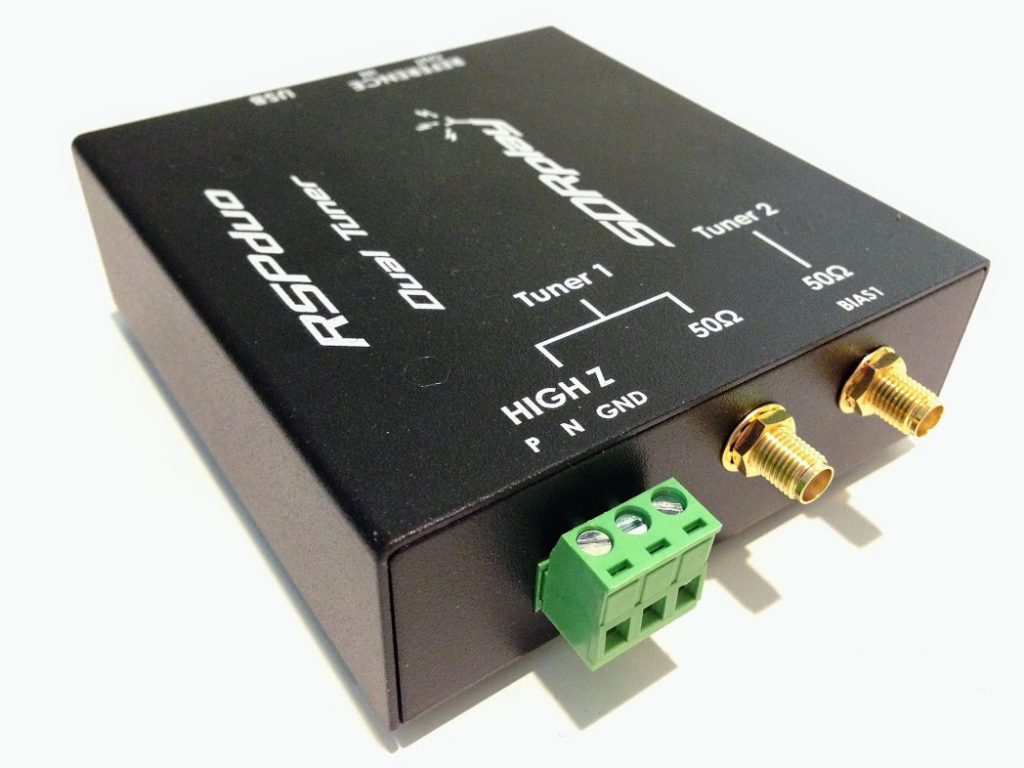
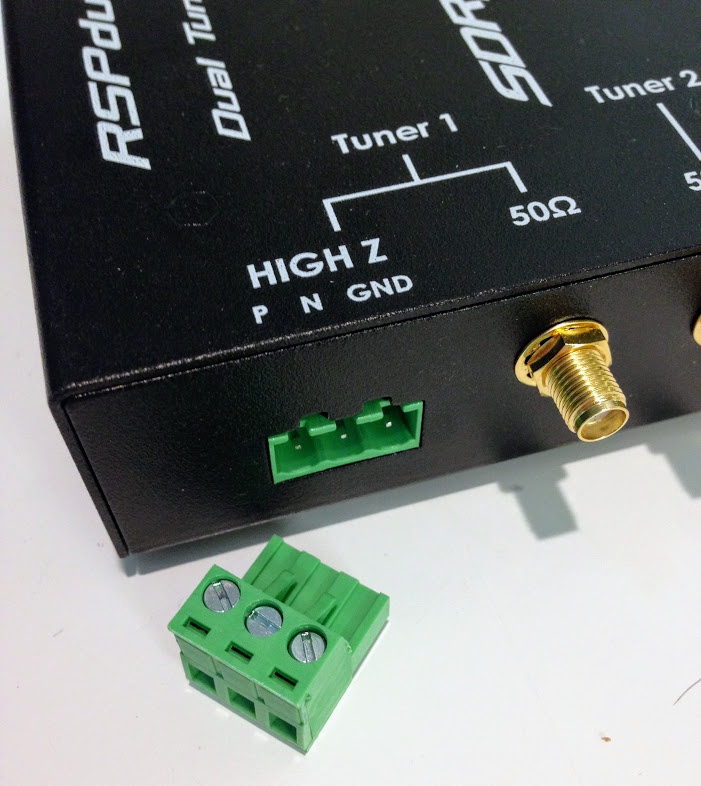
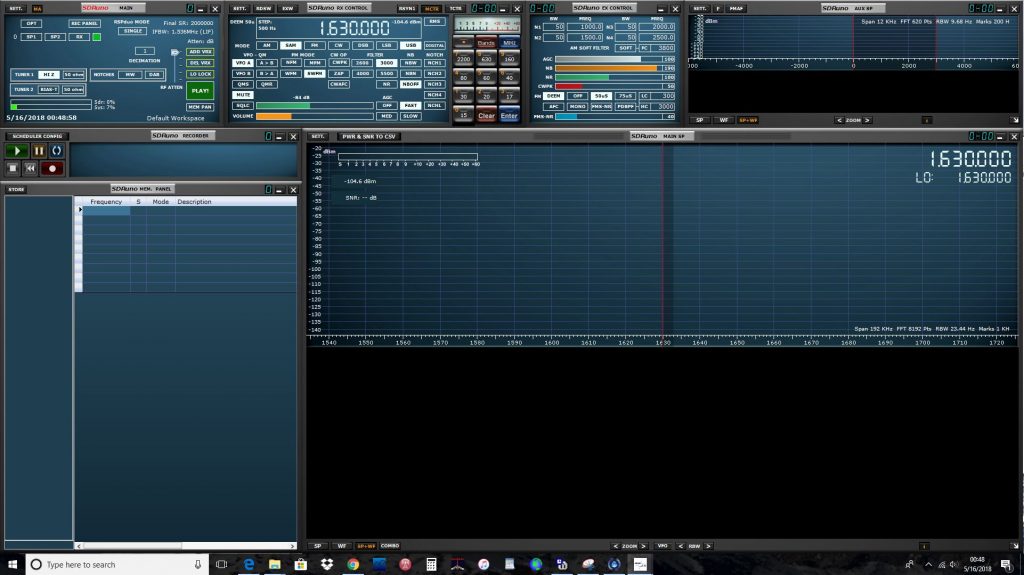
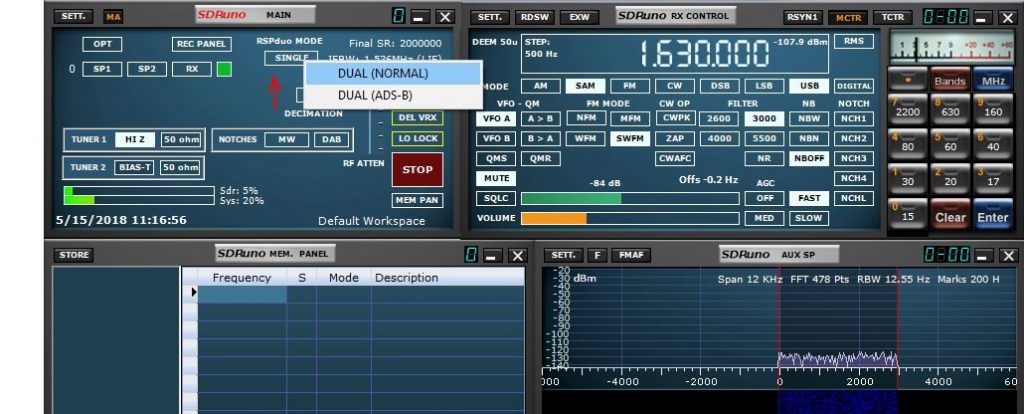
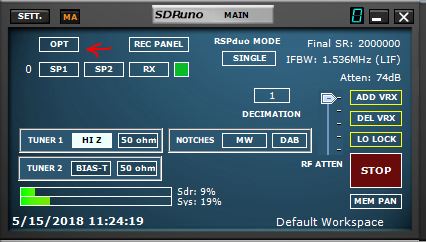
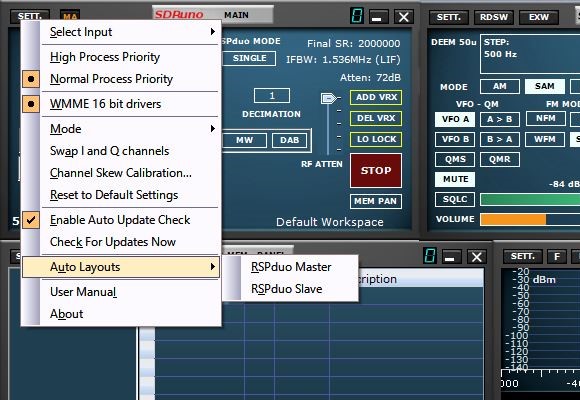
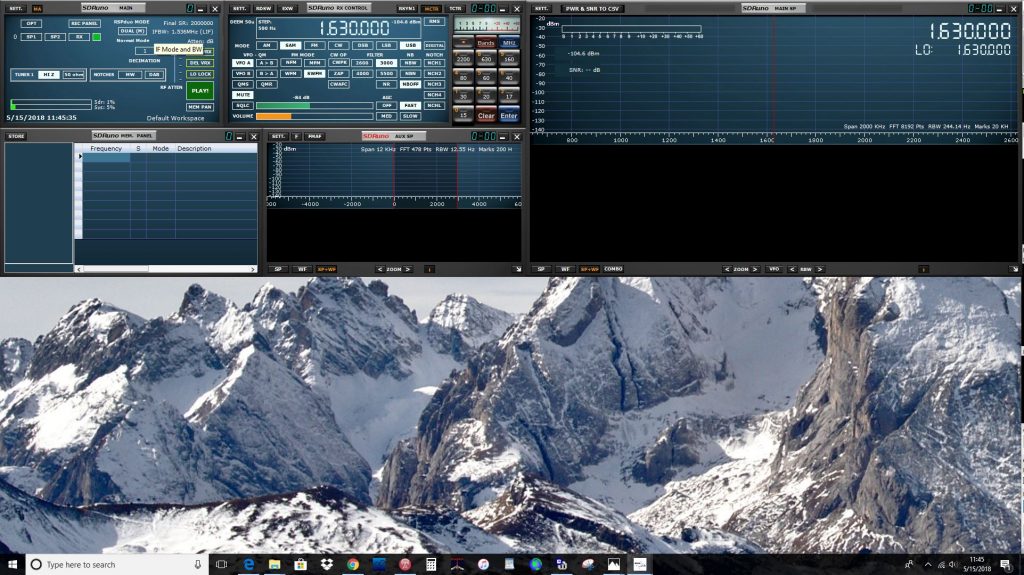
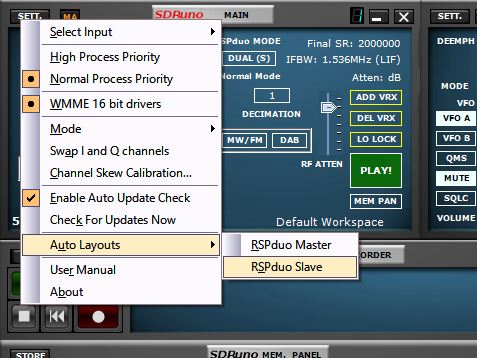
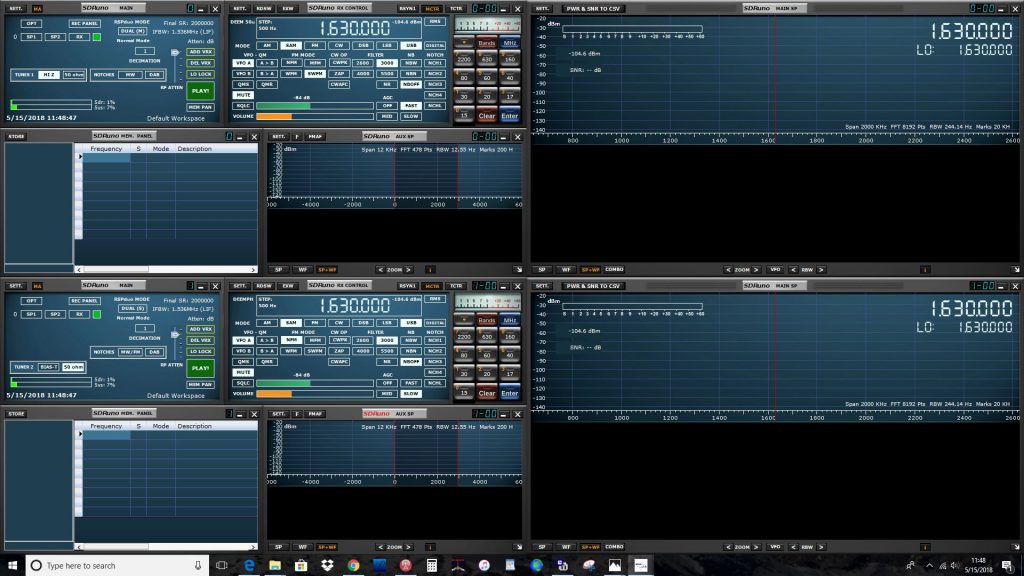
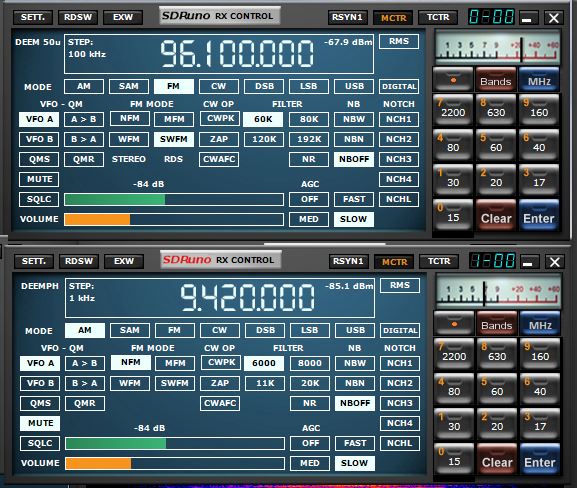
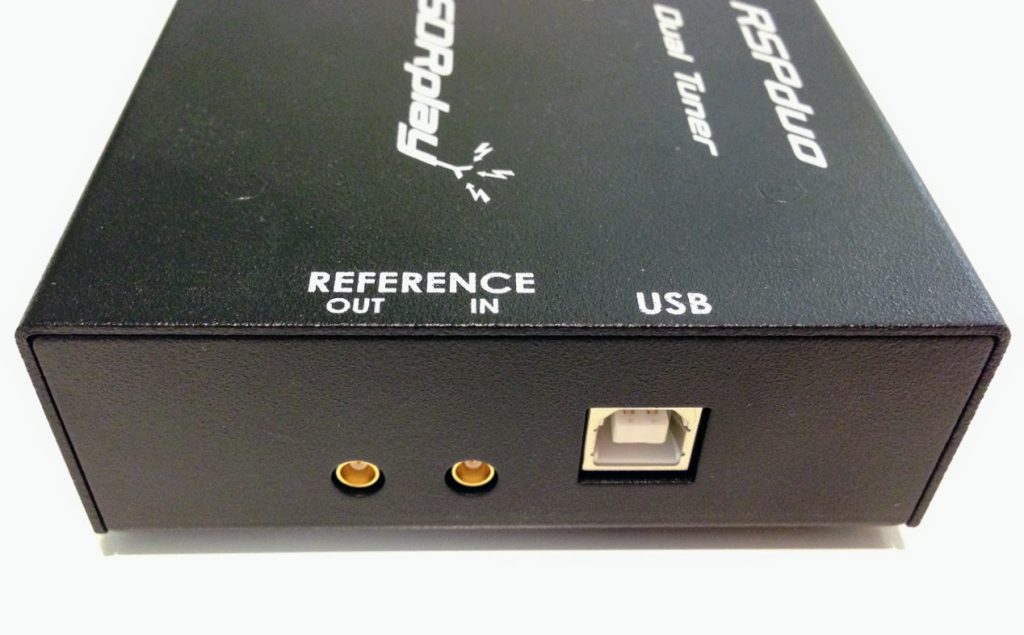
hi,
It is now 2020 going on…. Just wondering if anyone had received info from manufacturer -> if the radio supports coherent two channels & diversity at software ? Also would be interested, if it supports other reference frequencies than 24MHz ? I do have LeoBodnar GPSDO, would be more convenient to use 10MHz….
-Timo, OH7HMS
Hi, Tim,
Yes, the current version of SDRuno supports diversity reception via the RSPduo. It’s quite impressive. As for the reference frequencies, I hope someone more knowledgeable can answer that for you.
Best,
Thomas
As a follow-up, SDRplay tell me that yes, it must be 24 MHz. They provided a link to this archived discussion:
https://www.sdrplay.com/community/viewtopic.php?t=3812
Thanks for your great review.
Wonder how it performs in L-band around 1GHz. Do you know any noise floor figures? Is it lower than -60dBm?
Hi there !
do you know if is it possible to use SDRplay RSPduo with a parabolic antenna, like sky, using the tuner 2 to use the frequencies from 1ghz to 2ghz.
tks, antonio
I have an RSP2 and I love it. I guess some day the RSP2A will appear, the single tuner variant of the RSPduo, equipped with the nice filters and stuff.
But the quantum leap has yet to come: say bye bye to the clumsy flimsy asymmetric noise-prone obsolete USB interface in favour of the holy grail: LAN.
Hi there !
You wrote : “I much prefer using the Hi-Z port for everything longwave and mediumwave. I did hook up both antenna ports on the master receiver, however, and switched back and forth between the two. At least in my antenna setup, I feel like the Hi-Z option lends itself to improved sensitivity on these bands”
What was your antenna ?
If running a Wellbrook loop (ALA1530 for example), do you think the Hi-Z port of the RSPduo should also be used to a get better results on Medium Waves or should one connect the antenna to the 50 ohm input, as is logical ?
Thanks
Hi, Pierre,
Good question–I have not tried an amplified antenna like a Wellbrook on the Hi-Z port. I’ve only connected my large horizontal delta loop (passive) antenna.
This might be a good question to ask SDRplay, although I’m willing to be the 50 ohm port will give better results.
Cheers,
Thomas
This is truly why God gave us two ears.
Question: How is the audio output handled? Are both streams on the same speaker output? Maybe left for one and right for the other?
My RSPduo passed through Heathrow last night (watching via the shipping tracking link SDRplay provided me) and by now is most likely in the air on its way down here to Australia.
For when on the road…
The single USB connection (no separate power and two receivers on one USB port) really sold me. I have a massive interest in capturing two bands of spectrum simultaneously from locations I travel to. I recently tried out the great little Airspy HF+ (a fantastic little receiver – also a single USB connection) up on the North Korean border but I found it’s maximum spectrum capture of just under 800kHz too limiting for me – for example I found it frustrating not to be able to record the complete MW spectrum in one spectrum file at some interesting locations.
Where the due will shine is that on anupcoming trip the RSPduo will let me capture the whole MW band and a section of the HF spectrum I want to study really closely (3.5-5.5MHz) simultaneously via one USB cable to one laptop – all coming from a tiny little black box. I think this is going to be a wonder machine for my purposes!
Back at base…
One of the first applications I will use it for is using the two receivers to monitor Aeronautical HF Primary and Secondary frequencies at the same time. In my part of the world (South Pacific) 8867 and 5643 both are in almost constant use and aircraft flip between the frequencies until Brisbane/Auckland/Nandi (who are monitoring both simultaneously) respond. To get a complete picture of the airspace you need to have receives on both frequencies at the same time. Another aviation use I have is that I really need a fair/good quality VHF/UHF SDR as well to cover the VHF Civil Air-traffic and the UHF Military Traffic frequencies simultaneously.
This receiver will be the first time I have had a reasonable quality Wideband VHF/UHF SDR in the shack full time. I have plenty of VHF & UHF communications receivers here but these days if I can’t watch a spectrum or waterfall display of the adjacent frequencies I feel I am missing out.
It’s going to get a fair bit of satellite use as well – weather satellite, and also finding the transmissions of those Brazilian and Russian pirates that hijack the USA Military Satcom transponders – it’s all good fun I guess!
Mark,,
I am on the road all the time too, and I’ve been carrying a B210 from Ettus Research.
I too like to capture whole bands of interest, and I can set it to 28MHz bandwidth, and capture the whole FM band for playback later, and showing people back home. I’ve even managed to track down some good tunes doing it!
I can’t go lower than about 26Mhz (rated 70Mhz through 6GHz), but I can connect an upconverter to do so, if I feel the need.
I don’t know how deep your interest (or your pockets) on the subject, but Ettus has the X310, which will do LAN (and possibly usb? connections, I forget), and you can have dual tuners in that, and capture 2x 40MHz, or 2x160MHz depending on your daughter-boards, all at once. But you’d want a USB3 to 10GE adapter also for your laptop. This is the route I plan to take. Mrs will go mad for sure, but hey its me and not her on the road!
My brother is sending me an RSPduo next week. Look forward to trying the diversity feature – why oh why could they not do USB3.0 on it? They prob killed their sales 30% with that fumbeled ball…
Be safe on the road!
Me.
Well, it seems anyone can be easily swayed by a free lunch. Personally I find the company’s RSP1A very interesting, as do our anonymous reviewer. Thus this new dual receiver might be of interest, though more expensive than just buying two single RSP1A’s . However, this review does nothing to tell us how this “special” duo receiver works as, well, a real dual receiver using two different antennas. Instead our reviewer “hooked up [the RSPduo] to the same antenna via my ELAD ASA15 antenna splitter amplifier”.
Further: “one can listen for FM DX on one receiver while trying to snag elusive LW DX on the other”.
Yes, one certainly can, but who would? Here we are talking about totally different propagation patterns that no sane listener would waste time on trying that simultaneously.
So I would suggest we all wait for a more independant review. It may prove that this surely interesting company is on to an even more interesting product that its RSP1A, which I am considering a possible replacement of my trusted SDRIQ. We’ll see.
Hi, Hermod,
Some of the dual receive functionality is not yet available–like diversity reception where I’d need to use separate antennas for each receiver then essentially blend them in the application.
The reason I checked the dual receivers using one antenna through an amplified splitter is so that I’d have a baseline for comparison. I was able to verify that the second receiver was on par with the master receiver this way (though the master does offer the Hi-Z aux port). Once SDRplay implements diversity reception in RSPduo, I’ll have quite a lot of fun mixing antennas! Until then, I simply use the best antenna for each receiver’s task. For example, I have used an HF antenna on one receiver and UHF antenna on the other for ADS-B–quite useful especially if using a laptop where you might not have numerous USB ports.
It sounds like the RSPduo is probably not the SDR for you–a bit of overkill for your application. It is intended for those who want two independent receivers in one “box”. It might be hard to believe, but there are those of us who like running two receivers simultaneously. 🙂 I do all the time. This is one of the reasons I’ve been so impressed with the SDR Console application. The RSPduo simply eliminates the need to have two separate boxes hooked up to your PC simultaneously.
If you’re looking for a replacement for the SDRIQ (which is a great single receiver from RFspace), I would suggest the RSP1A, RSP2 or AirSpy HF+. All of these offer a lot of performance for less than $200. Just check to make sure they cover the frequency ranges you need. There’s no need to snag a dual tuner SDR if you have no plans to use two simultaneously.
Thanks for the comment!
Thomas
SDRPlay were at the Dayton Ham Festival too.
and slides (14 colour slides, 2 Mbytes) from their presentation. (Their Hamvention coverage at: sdrplay.com/first-day-at-dayton-hamvention/ )
https://www.sdrplay.com/wp-content/uploads/2018/05/DaytonSDRduoLaunchSlidesV2.pdf
Thanks, Bill!
Any indication if SDRUno (or any other SDR software like HDSDR) will eventually support diversity reception during playback from recorded I/Q files? This would be a holy grail for medium wave DXing – the ability to record the MW spectrum from two different antennas on the two tuners, then do phasing later during playback.
Truly the holy grail, Brett. Looking forward to that day! Walt
I do believe they might working on diversity reception in SDRuno, Brett! Might be worth popping a note off to the SDRplay folks, though, just to confirm.
They stated that they’re working on coherent receiver functionality like noise canceling in their forum, I’m not saying that it’s trivial to implement diversity reception on top but I can’t imagine they don’t have plans on that. I think that may take a while tho… 🙂
I spoke with most of the SDRplay team at Hamvention last week and can confirm they’re working on it! No timeline yet–and I agree this isn’t a simple implementation–but I think they’re giving this some priority.
Cheers,
Thomas
That would be awesome! Once this is on the horizon I’m sold – I already have the RSP1 and 2 and like any SDR, they give me pretty much all the commercial rig functionality (minus the overload resilience of course) I could dream of. The only thing they lack is diversity reception, and we’ll get on top what even boat anchors with diversity units didn’t have – antenna phasing, possibly some beam steering (think crossed loops/dipoles…yummy) and local noise cancellation capabilities. All in a tiny box for less than $300, it boggles the mind! 🙂
I sent an inquiry to the folks at SDRPlay asking specifically if they could see supporting diversity reception from recorded I/Q files, but their response only said they were “working on diversity reception in SDRUno, with no release date”. I’m not holding my breath that they are working on making it work with recordings, but I will remain hopeful!
I’m curious as to what kind of horsepower (system requirements) your PC needs for “two” SDR’s. Maybe I should wait for the SDRquad? SDRocto?
OMG! Sold! I placed my order a few minutes ago!
MiamiC70 the SDRUNO software that is shown above (and is the recommended software) is Windows only AFAIK. I will be using a Windows 10 setup on a iMac to run this software (I book the iMac into Windows using Bootcamp). I will in time also be trying it out in Parallels Desktop in MacOS because I would love to use this beastie in my travels on my MacBook.
Sounds great and I’m sure it works under MacOS right?
Very good and thorough review. Thanks for the effort that you put into the article.
Jim, K6BPT (USA)